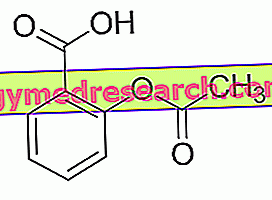Contraindications and unwanted reactions to vaccination
The administration of the vaccine is contraindicated in subjects with hypersensitivity to egg proteins or to other components of the vaccine. The flu vaccination must be postponed by one to two weeks in case of febrile manifestations or other acute diseases of any kind. People taking immunosuppressive drugs (depressing the immune system), may not respond optimally to the flu vaccination; therefore it would be advisable, when possible, to postpone the vaccination for at least one month after stopping the treatment. Treatment with cortisone for local use (ointments or gels) or for general use (tablets or punctures) at a low dose is not a reason to postpone the vaccination against influenza.
HIV seropositivity is not a contraindication to the administration of the influenza vaccination even if, HIV-positive subjects with low values of CD4 + T lymphocytes, the administration of the vaccine may not be protective and a second dose of vaccine in these subjects does not improve the response so substantial. Substantial increases in virus replication, reduction of CD4 + T lymphocytes and progression to AIDS have not been demonstrated in HIV-positive persons undergoing vaccination.
In individuals with autoimmune diseases, the influenza vaccine should be administered only after a careful evaluation of the risk-benefit ratio.
Manifestations of immediate hypersensitivity, or neurological reactions following a vaccine administration are an absolute contraindication to subsequent doses of the vaccine. Influenza vaccination is not contraindicated in breastfeeding women.
The most frequently reported side effects after administration of an influenza vaccine consist of pain, erythema of the skin, swelling, pain, redness and heat at the site of inoculation.
Other undesirable reactions reported frequently, especially in people who have never been vaccinated before, are general malaise, fever, myalgia (muscle pain), with onset 6 to 12 hours after vaccination, and lasting 1 or 2 days.
Allergic reactions such as hives and asthma have also occurred, especially in people with hypersensitivity to egg proteins or other components of the vaccine.
Other adverse events have been reported after influenza vaccination such as transient decrease in the number of platelets, neuralgia (pain related to the involvement of nerve roots) and neurological disorders (although the correlation between the administration of flu vaccine and these events has not been demonstrated). ).
Adverse reactions to vaccination should always be reported by the GP to the Ministry of Health by completing a specially prepared form.
When the patient goes to the Hygiene office of his own USL to make the vaccine, he will be asked to sign a paper. In it there are three sections: in the first there is some information about the meaning of "pandemic" and why it is useful to vaccinate against it for certain categories at risk; in the second, it explains what Focetria® is; in the third, the subject signs to give consent to be vaccinated, to have been informed and to have understood the information regarding the vaccine, its potential risks and benefits, for having consented to remain in the clinic 30 minutes after vaccination and possibly inform the his primary care physician on adverse reactions noted later.
The reticence of many people to get vaccinated comes from some information regarding the adjuvant used in the preparation, namely the squalene. All this was born from a research published in February 2000 in the journal Experimental Molecular Pathology which said that Gulf War veterans contracted a syndrome that bears this name ( Gulf War Syndrome-GWS ) after receiving anthrax vaccines that contained squalene and it was seen that 95% of those who developed this syndrome had developed antibodies against squalene. MF59 (the adjuvant to squalene present in the Focetria® vaccine and also in Pandemrix®, but not in Celvapan ®), was an unapproved ingredient in experimental anthrax vaccines, and has since been linked to potential onset (after years) of some autoimmune diseases such as rheumatoid arthritis, fibromyalgia, systemic lupus erythematosus, multiple sclerosis, Raynaud's phenomenon, Sjogren's syndrome, oral ulcers, thyroid problems, etc.
All this has not been sufficiently demonstrated, and the correlation between squalene and the onset of these diseases has never been ascertained, given that the studies carried out on patients vaccinated for swine flu are still too short to be able to give any kind of certainty.
There is currently no medical science that can guarantee the safety of swine flu vaccines (H1N1). Nevertheless, since it is an influence that can cause major complications in those at risk, especially those with basic respiratory and cardiac problems, it is recommended to be vaccinated, since the side effects of the vaccine would still be less than those resulting from one of the complications of influence.
There has also been much discussion of the economic question linked to this influence, so much so as to call it "The affair of the influenza A - Pandemic of the gain". Many questioned the economic interests behind the swine flu, and in particular they wondered why in the world every year the common flu kills half a million people, measles and pneumonia 10 million, malaria and diarrhea two million, but the news does not say anything about this. And instead, years ago, with the H5N1 (avian) flu, and today with H1N1 (swine), the world news have been flooded with news and warning signs. Avian influenza has caused the death of a few hundred people around the world, but it caused such a stir because, it is said, the pharmaceutical company that produces Tamiflù ® (an antiviral) has sold millions of doses to Asian countries, and also to British government, which bought 14 million doses for prevention in its population. With the influence of chickens yesterday and pigs today, the big pharmaceutical companies that market antivirals and vaccines, have achieved and are still having a huge profit. It is therefore said that the "panic effect" created in the population was a marketing tool to sell vaccines and antivirals, and therefore it is a real bargain at the expense of citizens.
See also: Nutrition, medicinal herbs and flu



